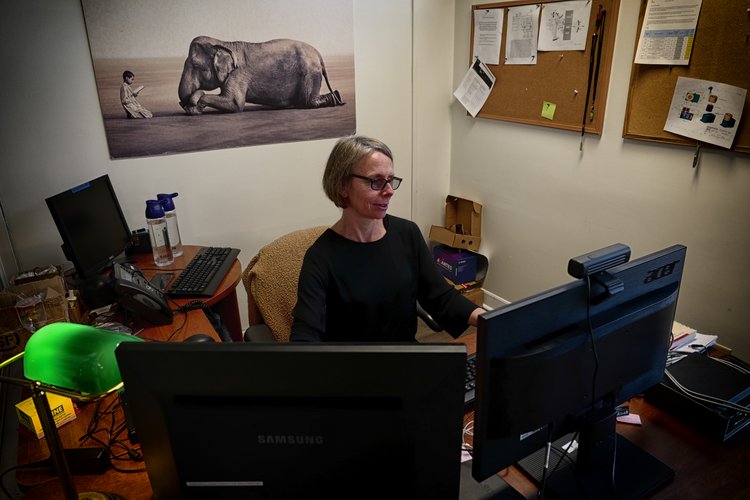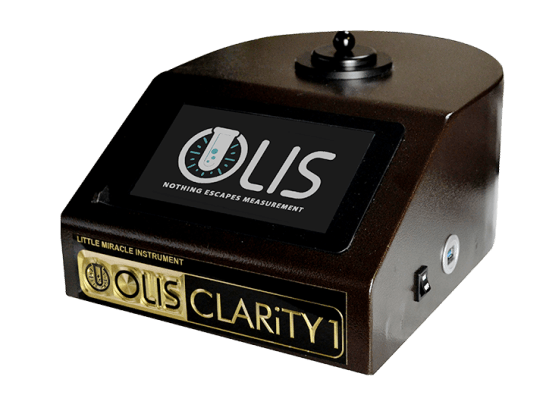The 5-Minute Rule for Spectrophotometers
The 5-Minute Rule for Spectrophotometers
Blog Article
About Circular Dichroism
Table of ContentsUnknown Facts About Uv/visHow Spectrophotometers can Save You Time, Stress, and Money.More About Uv/vis/nirLittle Known Questions About Circularly Polarized Luminescence.Examine This Report on Spectrophotometers

Although spectrophotometry is most typically applied to ultraviolet, noticeable, and infrared radiation, modern spectrophotometers can question wide swaths of the electro-magnetic spectrum, including x-ray, ultraviolet, visible, infrared, and/or microwave wavelengths. Spectrophotometry is a tool that depends upon the quantitative analysis of particles depending upon how much light is absorbed by colored compounds.
Not known Details About Uv/vis/nir
A spectrophotometer is frequently used for the measurement of transmittance or reflectance of solutions, transparent or opaque solids, such as polished glass, or gases. Lots of biochemicals are colored, as in, they take in visible light and for that reason can be measured by colorimetric treatments, even colorless biochemicals can frequently be converted to colored substances ideal for chromogenic color-forming responses to yield compounds ideal for colorimetric analysis.: 65 Nevertheless, they can also be designed to determine the diffusivity on any of the listed light ranges that normally cover around 2002500 nm using various controls and calibrations.
An example of an experiment in which spectrophotometry is used is the determination of the equilibrium constant of a solution. A certain chain reaction within an option might happen in a forward and reverse instructions, where reactants form products and products break down into reactants. At some time, this chemical response will reach a point of balance called a balance point.
Uv/vis Things To Know Before You Get This
The quantity of light that goes through the service is indicative of the concentration of specific chemicals that do not permit light to travel through. The absorption of light is because of the interaction of light with the electronic and vibrational modes of particles. Each kind of particle has a specific set of energy levels related to the makeup of its chemical bonds and nuclei and therefore will take in light of specific wavelengths, or energies, leading to unique spectral residential or commercial properties.
The usage of spectrophotometers spans different scientific fields, such as physics, products science, chemistry, biochemistry. spectrophotometers, chemical engineering, and molecular biology. They are commonly used in many markets including semiconductors, laser and optical manufacturing, printing and forensic assessment, along with in laboratories for the study of chemical compounds. Spectrophotometry is often utilized in measurements of enzyme activities, decisions of protein concentrations, determinations of enzymatic kinetic constants, and measurements of ligand binding reactions.: 65 Ultimately, a spectrophotometer has the ability to identify, depending upon the control or calibration, what substances are present in a target and precisely how much through estimations of observed wavelengths.
This would come as a solution to the formerly developed spectrophotometers which were unable to absorb the ultraviolet correctly.
The Best Guide To Circular Dichroism
It would be found that this did not offer acceptable results, for that reason in Model B, there was a shift from a glass to a quartz prism which permitted much better absorbance outcomes - circularly polarized luminescence (https://www.livebinders.com/b/3570027?tabid=514355ed-03f4-acee-f8e7-d79f6b7bffab). From there, Design C was born with an adjustment to the wavelength resolution which ended up having three systems of it produced
It was produced from 1941 to 1976 where the rate for it in 1941 was US$723 (far-UV accessories were a choice at additional cost). In the words of Nobel chemistry laureate Bruce Merrifield, it was "most likely the most crucial instrument ever established towards the development of bioscience." Once it ended up being ceased in 1976, Hewlett-Packard created the first commercially offered diode-array spectrophotometer in 1979 understood as the HP 8450A. It irradiates the sample with polychromatic light which the sample takes in depending upon its properties. It is sent back by grating the photodiode array which look at this web-site discovers the wavelength region of the spectrum. Ever since, the production and execution of spectrophotometry devices has actually increased tremendously and has actually ended up being one of the most ingenious instruments of our time.

More About Circularly Polarized Luminescence
The grating can either be movable or repaired.
In such systems, the grating is repaired and the strength of each wavelength of light is determined by a various detector in the selection. When making transmission measurements, the spectrophotometer quantitatively compares the portion of light that passes through a recommendation service and a test service, then electronically compares the strengths of the 2 signals and calculates the percentage of transmission of the sample compared to the referral requirement.

Report this page